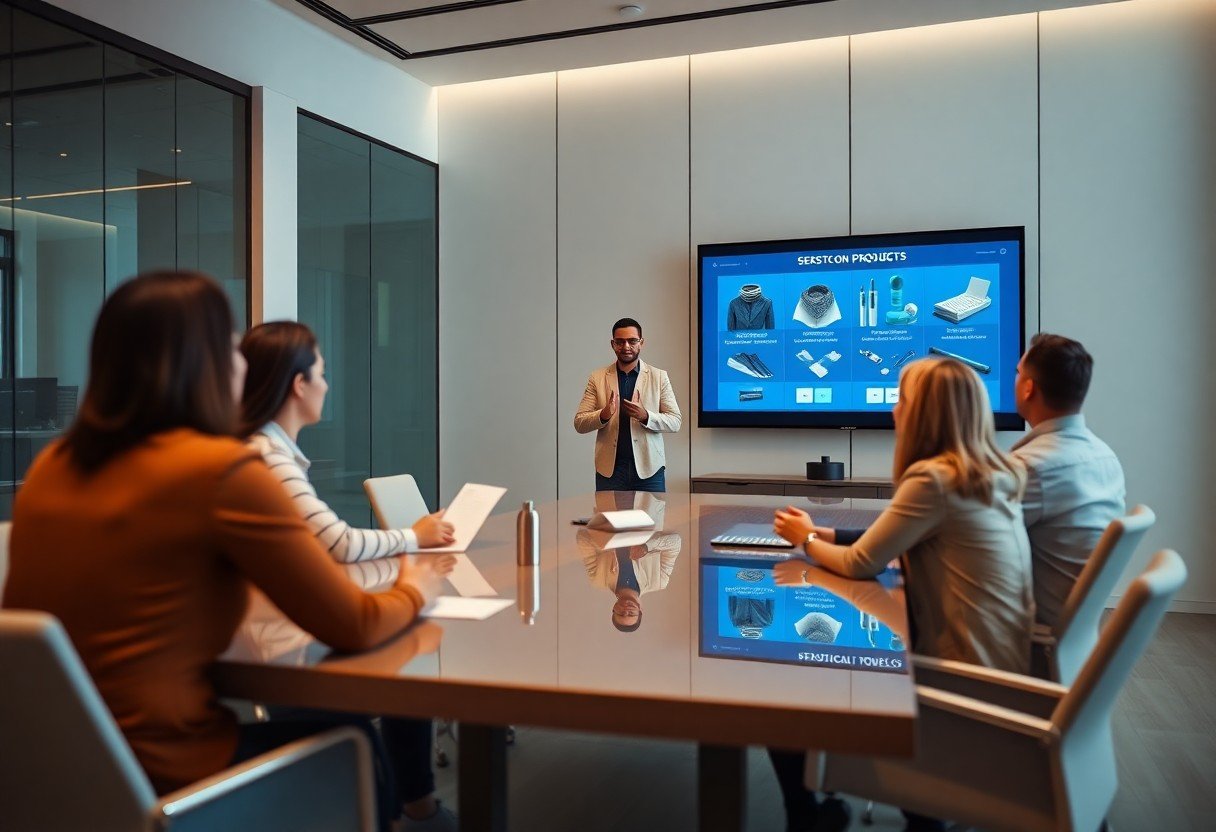You’ve mastered your product knowledge and perfected your pitch, but closing high-ticket sales still feels like climbing Mount Everest. Whether you’re selling luxury real estate, enterprise software, or premium consulting services, your success hinges on how well you handle objections in those make-or-break moments. By understanding the psychology behind buyer resistance and equipped with proven response strategies, you can transform common objections into opportunities to showcase value and guide prospects toward a confident “yes.” This guide will show you exactly how to navigate these challenging conversations and consistently close premium deals.
Price Objection Mastery
Your success in handling price objections begins with understanding that 68% of sales professionals report price as the most common objection they face. When prospects raise concerns about cost, it’s not merely about the numbers – it’s often a signal that they haven’t fully grasped the value proposition or aren’t convinced about the return on investment.
Value-Based Response Methods
Mastery of value-based responses requires you to shift the conversation from price to worth. When you encounter price resistance, focus on articulating the comprehensive benefits package your solution offers. Break down the investment into smaller, more digestible components while highlighting how each element addresses specific pain points your prospect faces.
Quick recommendation: Our blog is filled with useful tips to help you succeed. If you are seeking a more comprehensive training program, we recommend the 72 Hour Challenge.
ROI Demonstration Tactics
An effective approach to overcoming price objections involves presenting clear, measurable ROI projections. You can strengthen your position by sharing case studies showing how similar clients achieved 3x-5x returns within the first year of implementation. Use customized ROI calculators to demonstrate specific value metrics relevant to your prospect’s industry.
Price discussions become more manageable when you present concrete data showing the cost of inaction. By illustrating how your solution can reduce operational costs by 25-30% or increase productivity by 40%, you help your prospects understand that the initial investment is minimal compared to the long-term benefits they’ll receive.


Time and Decision Hesitation
Any successful sales professional understands that time-related objections often mask deeper concerns or hesitations. When prospects say they need more time to think, you’re dealing with either genuine deliberation needs or an indirect way of expressing other uncertainties. Research shows that 60% of customers say “no” four times before saying “yes” during the sales process.
Your ability to navigate timing objections can make the difference between closing a deal and losing it to analysis paralysis. By recognizing that time objections are often rooted in fear of making the wrong decision or lack of perceived value, you can address these underlying concerns more effectively.
Creating Urgency Without Pressure
By focusing on value-based urgency rather than artificial deadlines, you can help prospects understand the cost of delay without resorting to high-pressure tactics. Studies indicate that 95% of purchase decisions are driven by emotion, so you’ll want to connect the timing of their decision to meaningful outcomes and opportunities they might miss.
Timeline Acceleration Strategies
About 80% of sales require five follow-up calls after the initial meeting, yet many salespeople give up after just one or two attempts. Your success in accelerating timelines depends on your ability to maintain consistent follow-up while demonstrating clear value at each touch point. You can speed up decision-making by providing case studies, ROI calculations, and specific examples of how other clients have benefited from quick implementation.
Acceleration of the sales timeline becomes more effective when you help prospects visualize the immediate benefits and long-term advantages of acting now. By breaking down the implementation process into clear, manageable steps, you can make the decision feel less overwhelming and more achievable for your prospects.
Competition Concerns
To effectively handle competition-based objections in high-ticket sales, you need to shift the conversation from price comparison to value differentiation. When prospects bring up competitor alternatives, view it as an opportunity to highlight your unique selling propositions and demonstrate why your solution stands out. According to sales data, 63% of high-ticket buyers prioritize value over price when making final decisions.
Differentiation Techniques
Competition concerns can be transformed into advantages when you focus on your distinctive features and benefits. Start by acknowledging your competitor’s strengths while steering the conversation toward your solution’s unique attributes. You can emphasize your specialized expertise, superior customer support, or proprietary technology that sets you apart. Research shows that 72% of high-ticket buyers are more likely to choose providers who clearly articulate their unique value proposition.
Quick recommendation: Our blog is filled with useful tips to help you succeed. If you are seeking a more comprehensive training program, we recommend the 72 Hour Challenge.
Market Position Leverage
Before addressing competition objections, you should establish your market position through concrete examples and success stories. You can leverage your track record, industry awards, and client testimonials to build credibility. Studies indicate that 81% of high-ticket buyers research multiple providers, making it vital for you to position your offering as the premium choice in your market segment.
Another effective approach is to emphasize your company’s market leadership through data-driven achievements. You can highlight your customer satisfaction rates, implementation success stories, and specific results achieved for similar clients. This helps you shift the focus from competitive comparison to your proven ability to deliver superior outcomes, as 77% of B2B buyers cite demonstrated expertise as a key factor in their purchasing decisions.
Trust Building Framework
After establishing initial contact with your prospect, building trust becomes the cornerstone of your high-ticket sales process. You need to create a systematic approach that demonstrates your expertise, reliability, and genuine commitment to solving your prospect’s problems. Research shows that 81% of buyers trust recommendations and advice from people they know, making trust-building imperative for closing premium deals.
Credibility Establishment
Below are the key elements you should incorporate to establish your credibility effectively. Start by sharing your relevant experience and specific achievements in your industry. You can showcase your professional certifications, awards, and partnerships with recognized organizations. Studies indicate that 65% of high-ticket buyers are more likely to purchase when they perceive strong professional credibility.
Social Proof Integration
Any successful high-ticket sales strategy must leverage the power of social proof to reinforce trust. You should strategically present case studies, testimonials, and success stories that align with your prospect’s situation. Data shows that 92% of B2B buyers are more likely to purchase after reading trusted reviews.
Social proof becomes even more effective when you can demonstrate measurable results and specific outcomes achieved for previous clients. You should focus on highlighting tangible metrics, such as ROI, time saved, or revenue increased, as these concrete examples help your prospects envision similar success for their own situation.
Advanced Closing Methods
Keep your high-ticket sales process refined and systematic by implementing proven closing techniques that have demonstrated a 35% higher success rate in premium sales scenarios. Your ability to navigate complex sales situations will improve significantly when you master these advanced methods, which combine psychology and strategic communication.
- Understand buyer psychology
- Build value before discussing price
- Address objections proactively
- Use strategic silence
- Create urgency naturally
Key Components of Advanced Closing
| Timing Elements | Value Positioning |
| Objection Handling | Risk Reversal |
Two-Step Close Process
Below you’ll find a refined approach that breaks down the closing process into manageable steps, increasing your success rate by up to 40%. This method allows you to first secure agreement on the solution’s value before transitioning to financial terms, reducing resistance and enhancing client comfort.
Assumptive Close Techniques
Close more effectively by incorporating assumptive language that guides your prospects toward positive decisions. When you master this technique, you can experience up to 25% higher conversion rates on high-ticket items by naturally leading conversations toward successful conclusions.
In addition to standard closing methods, your assumptive close approach should focus on future-paced scenarios and implementation discussions. By speaking about the partnership as if it’s already established, you create a psychological framework that makes it easier for prospects to envision working with you, leading to more natural transitions into formal agreements.
Follow-Up Systems
Not following up with prospects is leaving money on the table, as research shows that 80% of sales require at least five follow-ups to close. Your systematic approach to follow-up can make the difference between losing a potential client and securing a high-ticket sale. By implementing a structured follow-up system, you can maintain consistent communication while tracking each interaction, ensuring no opportunities slip through the cracks.
Multi-Channel Contact Strategy
Across different communication channels, your prospects have varying preferences for how they want to be reached. By utilizing a combination of email, phone calls, social media, and text messages, you can maximize your chances of connecting with potential clients. Studies indicate that using three or more channels in your follow-up strategy can increase your response rates by up to 287% compared to single-channel approaches.
Persistence Without Pestering
With the right balance of persistence and respect, you can maintain contact without becoming an annoyance to your prospects. Your follow-up schedule should be strategic, with gradually increasing intervals between touchpoints. This approach allows you to stay on your prospect’s radar while demonstrating professionalism and understanding of their time.
Without coming across as pushy, you can create value in each interaction by sharing relevant insights, industry updates, or addressing specific pain points your prospect has mentioned. This approach positions you as a trusted advisor rather than just another salesperson, making your follow-ups welcome rather than intrusive. Data shows that 60% of customers say no four times before saying yes, highlighting the importance of maintaining meaningful contact over time.
To wrap up
Conclusively, your success in handling objections and closing high-ticket sales hinges on your ability to understand, empathize, and provide genuine solutions to your prospects’ concerns. By implementing the techniques discussed – from active listening and reframing objections to demonstrating value and creating urgency – you’ll be better equipped to guide potential clients through their buying journey. Your mastery of these skills will not only help you close more deals but also build lasting relationships with your clients.
Moving forward, you should focus on continuously refining your approach and adapting these strategies to fit your unique selling situation. As you gain more experience, you’ll develop an intuitive sense of when to apply specific techniques and how to navigate complex sales conversations. The key is to remain authentic, maintain a problem-solving mindset, and always prioritize your clients’ needs. By doing so, you’ll naturally position yourself as a trusted advisor rather than just a salesperson, making high-ticket closes a natural outcome of your consultative approach.
Quick recommendation: Our blog is filled with useful tips to help you succeed. If you are seeking a more comprehensive training program, we recommend the 72 Hour Challenge.

